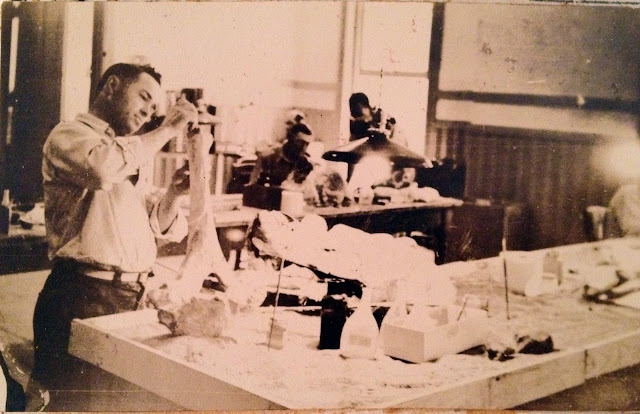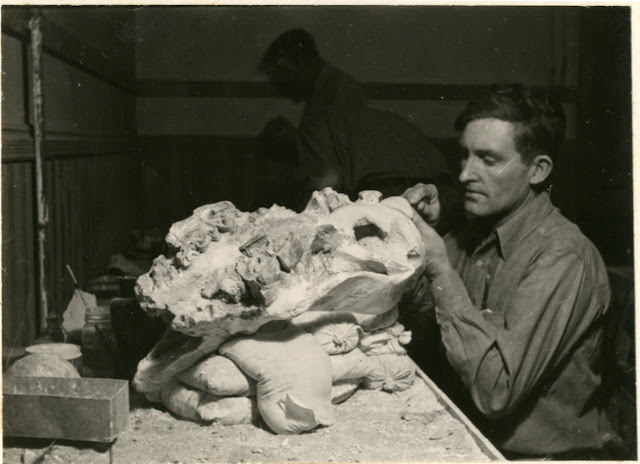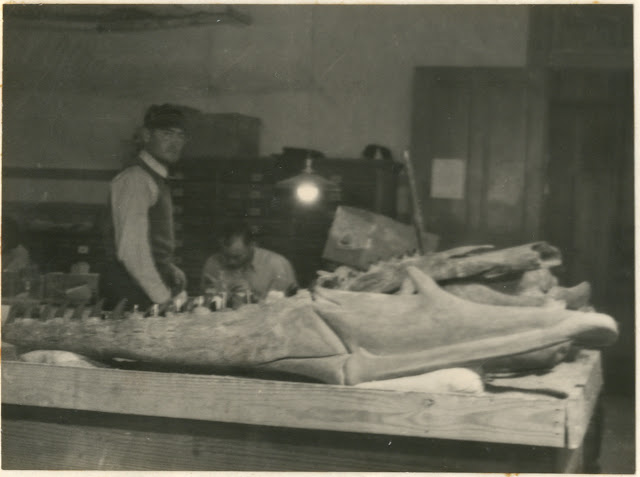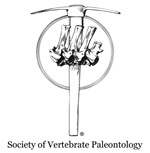Sad news. One of my favorite days during my time in Chicago was spent packed into the cab of the Geology Department pickup with Bill Turnbull and Bill Simpson driving to Rainer Zangerl's home several hours south in Indiana. I helped Simpson pack specimens and documents from Zangerl's basement while he and Turnbull caught up on the front porch and shared iced tea (both had started at the Field Museum at about the same time). It was a sweaty, dusty, silverfish-filled day, but also filled with great stories and time spent with Bill, and I remember it fondly.
Reposted email from Pete Makovicky, FMNH Geology Department Chair--
It is with great sadness that the Geology Department marks the passing of Curator
Emeritus William D. Turnbull. Bill passed away Wednesday following a short illness.
Born in 1922 in Milwaukee, Bill attended the University of Wisconsin, Milwaukee
and graduated in 1942. After serving in the Army during WWII, Bill joined the Field
Museum as a fossil vertebrate preparator in 1946. Bill earned his Ph.D. degree in
Paleozoology from the University of Chicago while working at the museum, and
ascended to the post of Assistant Curator of Fossil Mammals in 1956. He was promoted
to Associate Curator in 1963, and again to Curator in 1973. He also held lecturer status
at the University of Chicago and University of Indiana at South Bend, and was a
research associate at the University Texas at Austin and the Western Australian
Museum. He served the Society of Vertebrate Paleontology as Vice-President from
1975-1976 and as President from 1976-1977. Bill retired in 1987, but continued to come
to work daily as long as weather and health permitted.
Bill was an avid field paleontologist and his collecting efforts ranged widely in the
US from the South to the western states, as well as farther afield in Australia. He made
significant contributions to the Museum’s collections, and his collections of Eocene
mammals from the Washakie Basin are spectacular. Several of Bill’s most spectacular
finds are on display in Evolving Planet, including the mosasaur Globidens, the turtle
Naomichelys, and the aïstopod amphibian Pseudophlegethontia turnbullorum named in
honor of Bill and his first wife, Priscilla. Bill’s scholarly publications ranged widely,
covering topics such as jaw mechanics of archaic Mesozoic mammals, descriptions of
marsupial and rodent faunas of the Australian late Neogene, to Pleistocene mammals
of the Midwest. Bill was working on manuscripts on the remarkable Eocene finds he had
made in the Washakie Basin in Wyoming, the mammalian fauna from the Madura Cave
in Western Australia, and on the history of the department, when he fell ill.
During his long tenure at the Museum, Bill interacted with generations of
scientists, ranging from Elmer Riggs, the first vertebrate paleontologist in the Museum’s
history, to the current cohort of curators. He collaborated with colleagues from across
the globe. He will be remembered as a dedicated professional, a wonderful citizen
to the department and the institution, and as a warm and caring family man. His
legacy lives on in innumerable ways, including in the many specimens and scholarly
contributions with which he enriched our exhibits and science, and in the memories we
all have of his life as a Museum scientist.
Bill is survived by his wife Hedy, his stepdaughter Eve Band and her husband
Steve and their two daughters; his granddaughter Lindsey Goodwin; his stepson Harry
Brotman and his two daughters; his brother Alan Turnbull, sister Jane Przedpelski, and
their spouses and children. Condolences can be sent to:
Hedy Turnbull
Montgomery Place
5550 S. South Shore Drive, Apt. 514
Chicago, IL 60637
--
Peter J. Makovicky
Associate Curator and Chair
Dept. of Geology
Field Museum of Natural History
1400 S Lake Shore Drive
Chicago, IL 60605
Ph: (312) 665 7633
Fax: (312) 665 7641













































